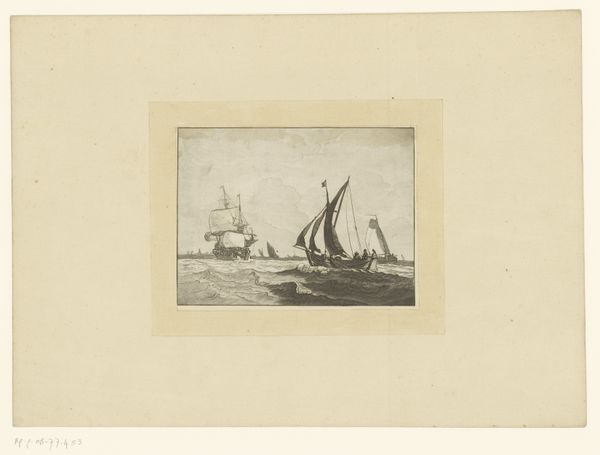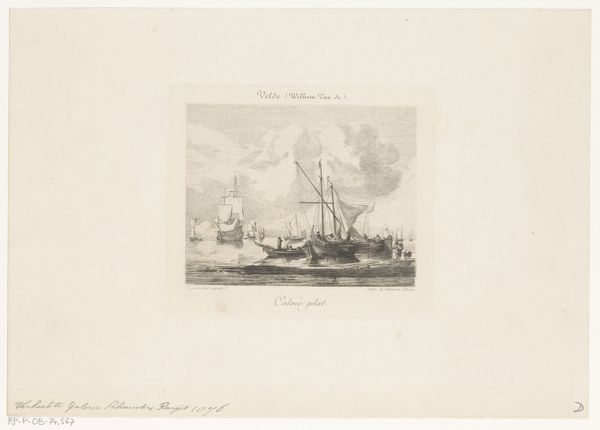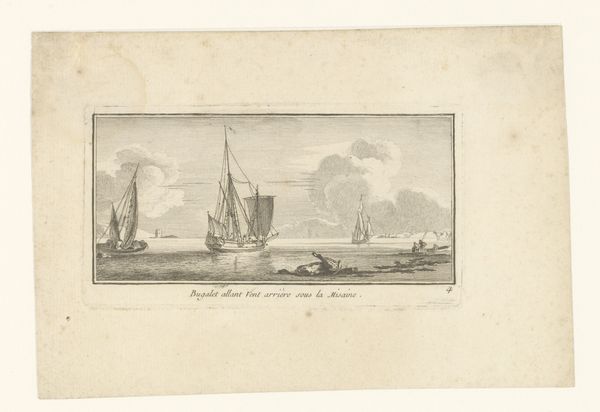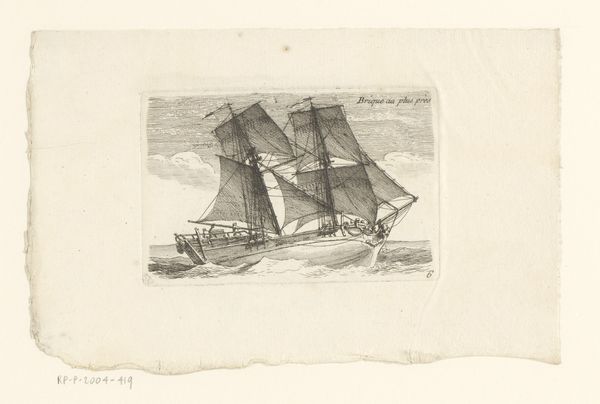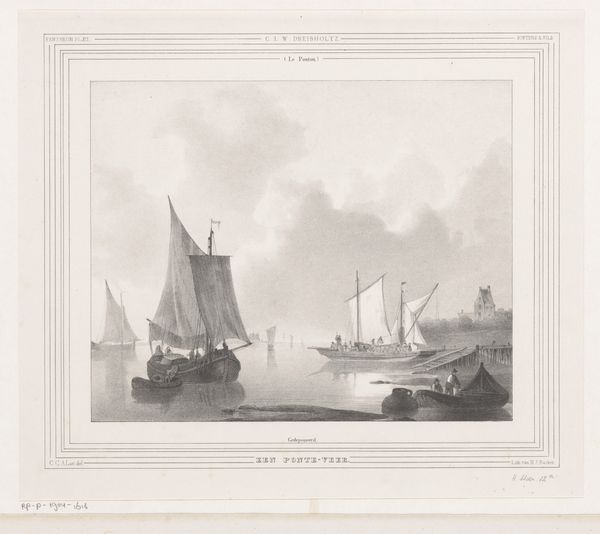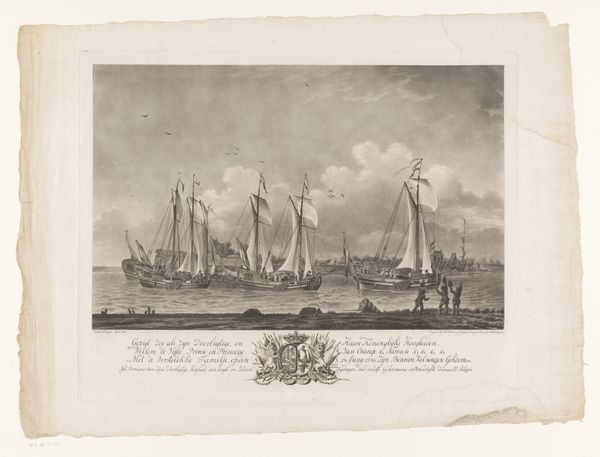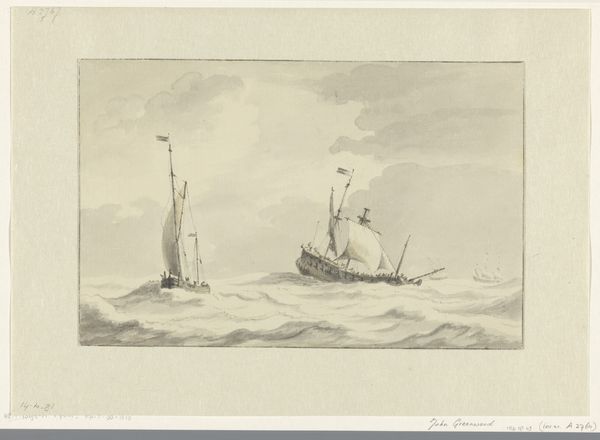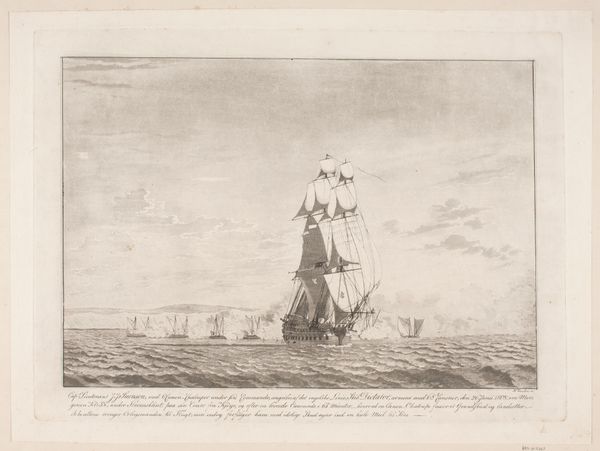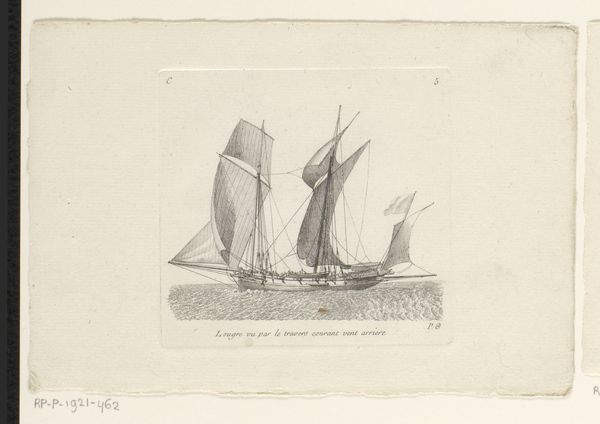
Dimensions: height 450 mm, width 620 mm
Copyright: Rijks Museum: Open Domain
Curator: Looking at this 1866 watercolor painting, "Schroefstoomschip 4e klasse" by Gerard Voorduin, currently housed in the Rijksmuseum, one immediately gets a sense of the technological transition of maritime transport. The composition focuses on a fourth-class screw steamship cutting powerfully through the waves. Editor: Yes, my first impression is of a somber, almost melancholic scene. The grey-toned watercolor work captures a feeling of industrial might but within a very subdued romanticism. I'm particularly drawn to how the materiality of watercolor renders the light. Curator: Precisely! And the romantic style is crucial here. The ship isn't just a vessel, it becomes a symbol. These new screw steamships dramatically altered maritime labor; their increased speed and capacity affected trade routes, sailor jobs, shipbuilding practices, and so forth. It represents the changing face of global interconnectedness during this period. Editor: Absolutely. And think about where this watercolor would have been displayed, how it would have been consumed. Was it a piece meant for public consumption, perhaps used to generate national pride in technological advancements and maritime prowess, or something that ended up mostly in private collections of naval engineers, shipping industrialists, or government workers. Who was celebrating this and who was being disaffected by this advancement? Curator: Considering Voorduin's career as a maritime painter, the piece reflects, also, artistic currents of his era that were keen to demonstrate the aesthetic grandeur within scenes of burgeoning modernity and technological progression. So you’ve really highlighted how it occupies an important nexus between maritime power, social narrative, and cultural artifact. Editor: And looking at it again, the details in the depiction of the waves, the rigging... They showcase the craftsmanship involved not just in sailing but also in artmaking during a period where ideas of 'high art' were evolving relative to crafts of more popular consumption, reflecting how technology both created class tensions and was absorbed differently in public cultural contexts. Curator: A fascinating insight – one can almost trace the shifting attitudes to labor and material progress by the manner in which these ships came to be represented and consumed at the time! Editor: Exactly. It moves beyond a mere portrait of a ship into something indicative of widespread material and social change.
Comments
No comments
Be the first to comment and join the conversation on the ultimate creative platform.
